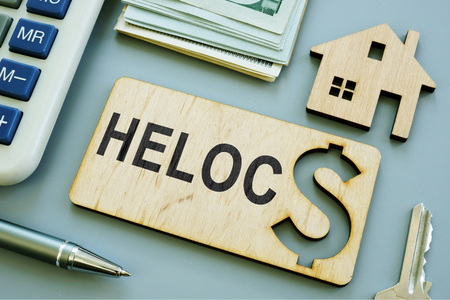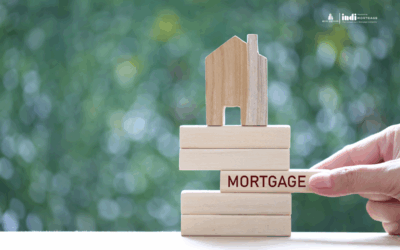Welcome To Our Mortgage Educational Blog About:
Home Equity Line of Credit Edmonton

Mortgages are one of the biggest purchases you’ll ever make, so it’s important to understand how mortgage payments work in order to make sure you don’t end up with more houses than you can afford. Many people who take out mortgages aren’t aware of how much they can afford, and they end up falling behind on their payments or, worse, losing their homes due to foreclosure. If you want to be sure you’re paying the right amount each month, keep reading for info on calculating your monthly mortgage payment and other related topics like mortgage prepayment penalties.
Understanding Home Equity Line of Credit
A Home Equity Line of Credit (HELOC) is a form of revolving credit in which your home serves as collateral. Because a HELOC is secured by the equity in your home, your interest rate may be lower than many unsecured types of credit. If you have sufficient equity in your home depending on the growth in Edmonton housing market, you can borrow against it to get extra money for emergencies or future expenses. Unlike with a mortgage, you don’t need to apply for a HELOC all at once — some lenders let you borrow just a small amount at first and then add to it later, if necessary.
Because a HELOC is designed to be used like a checkbook or credit card, you can pay down or pay off your balance and reuse it again and again during the draw period. A HELOC may offer tax advantages, too; consult a tax advisor for more information.
You are borrowing against the value of your home. The amount available for withdrawal is called the credit limit and is determined by calculating 85% of the equity in your home.
Example: Your home is valued at $250,000, and you owe $100,000 on the first mortgage. 85% of $150,000 ($250,000 minus $100,000) is $127,500. This would be the amount available for withdrawal under a Home Equity Line of Credit program.
Interest rates for HELOCs
Interest rates for HELOCs for first-time home buyers in Edmonton tend to be lower than other forms of credit since the loan is secured by your home.
Typical repayment term: A HELOC is typically repaid over 10 to 20 years, but the repayment period can vary.
Credit score: You’ll need a good credit score (usually 680 or higher) to qualify for a HELOC.
Down payment: None required. However, many lenders require you to have some equity in your home to qualify for a HELOC.
Debt-to-income ratio: Most lenders require that your monthly debt payments be less than 43% of your monthly income in order to qualify for a HELOC.
Interest rate: The interest rate on a HELOC is variable and may change each month based on the prime rate index plus an additional percentage called the margin. Your lender will determine what this margin is when it issues you your HELOC. The margin typically ranges from 0% to 3%. Other fees: You’ll also likely have to pay closing costs when you set.
How Does a HELOC Work?
With a HELOC, you’re borrowing against the available equity in your home, and the house is used as collateral for the line of credit. As you repay your outstanding balance, the amount of available credit is replenished — much like a credit card. This means you can borrow against it again if you need to, and you can borrow as little or as much as you need throughout your draw period.
Your draw period (the time during which you’re allowed to use the line of credit) varies by the lender; typically, it starts off with ten years. At the end of this time, your repayment period begins — usually for 20 years — during which time you’ll pay down principal and interest until your loan is paid off. If your interest rate is adjustable, it’s tied to an index that measures market rates. And as long as rates remain stable, you won’t have to worry about any change in your payment over time. If rates fall or rise while you’re borrowing, they could change how much money you owe each month — but if they do go up or down significantly enough that it would cause financial distress, many lenders will allow you to refinance before that happens.
Phases of Home Equity Line of Credit
There are some main phases of a home equity line of credit:
Borrowing Phase:
The borrowing phase begins when you take out a HELOC and lasts for ten years, which is called the draw period. During this time, you borrow money up to your credit limit. You can pay it back at your leisure or even make a small payment each month and let the remaining balance accrue interest.
Repaying Phase:
The repaying phase of a HELOC begins when the draw period ends and lasts for about 15 years. During this time, you will be required to pay both principal and interest on what you borrowed during the borrowing phase. If you have an interest-only HELOC, you will pay only interest for the first ten years.
Re-borrowing Phase:
The re-borrowing phase is considered a bonus period after a HELOC is completed paying off. If any balance still exists on your HELOC during this time, then you can use it again as if you have just taken out a new HELOC loan.
Beware of Fraud
The most common type of fraud occurs when someone applies for and takes out a HELOC without your knowledge. If you’re looking to take out a HELOC, there are some steps you can take to protect yourself. First, know what fees lenders charge and consider asking that they be waived. Second, check with multiple lenders — but only after doing your research; don’t just pick one because it’s closest to home or offer you an incentive like free tickets to see your favorite sports team. Third, make sure that any changes in your home address or phone number are reported promptly so that all correspondence from your lender arrives at its proper destination.
Conclusion
In conclusion, HELOCs are useful financial tools that can help you pay for your home repairs or new investment opportunities with interest rates lower than most other loans. They also allow you to borrow more money compared to credit cards or auto loans and let you choose how much and when to repay it. All of these advantages make HELOCs ideal for many people to achieve their financial goals.
Don’t hesitate to contact us with any questions you may have.
Recent Educational Blogs
Preparing for Renewal Season
Oct 2025 | Preparing for Renewal Season: What 2026 Borrowers Should Do NowWith nearly 60% of Canadian homeowners set to renew their mortgages by the end of 2026, preparation has never been more important. After years of ultra-low rates during the pandemic, many...
Navigating Mortgage Renewals
Sept 2025 | Navigating Mortgage RenewalsFrom Rock-Bottom Rates to Today’s RealityIf you were lucky enough to secure a mortgage in the early days of 2020, chances are your rate was impressively low, often near 1% to 2%. At the time, the Bank of Canada’s overnight rate...
How Your Credit Score Impacts Mortgage Approval
Aug 2025 | How Your Credit Score Impacts Mortgage Approval If you’re thinking about buying a home, you might be wondering how your credit score influences the process. The short answer: your credit score is one of the most important factors lenders consider when...



